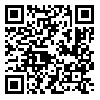Volume 9, Issue 2 (2021)
CLRJ 2021, 9(2): 53-87 |
Back to browse issues page
Download citation:
BibTeX | RIS | EndNote | Medlars | ProCite | Reference Manager | RefWorks
Send citation to:



BibTeX | RIS | EndNote | Medlars | ProCite | Reference Manager | RefWorks
Send citation to:
motagizadeh I, Hajikhani A, Modiri S. Translation Quality Assessment Wisdoms of the Nahj al-Balagha based on Carmen Garces model (Shahidi and Dashti translations as case study). CLRJ 2021; 9 (2) :53-87
URL: http://clrj.modares.ac.ir/article-12-52463-en.html
URL: http://clrj.modares.ac.ir/article-12-52463-en.html
1- . Professor, Department of Arabic Language and Literature, Tarbiat Modares University, Tehran, Iran , motaghizadeh@modares.ac.ir
2- . Associate Professor, Department of Quraan and Hadith Sciences, Tarbiat Modares University, Tehran, Iran
3- . MA, Arabic Language and Literature, Tarbiat Modares University, Tehran, Iran
2- . Associate Professor, Department of Quraan and Hadith Sciences, Tarbiat Modares University, Tehran, Iran
3- . MA, Arabic Language and Literature, Tarbiat Modares University, Tehran, Iran
Abstract: (1822 Views)
The method of translating texts and maintaining its effectiveness has been one of the main concerns of translators and critics; Because no text can be translated without making changes to it. This becomes even more important in the translation of religious texts, and we see numerous translations of them. Undoubtedly, every translation has positive and negative features, and the quality of the translation depends on the extent to which it has these features. There are several theories in determining the quality level of translated texts, and they have often tried to achieve complete and desirable translations. These efforts lead to progress in translation. In this study, we chose the model of Ms. Carmen Garces, which is designed in four levels: semantic-lexical, morphological syntactical, discursive functional and stylistic-pragmatic, because of its applicability to literary texts, and in a descriptive-analytical and statistically method, we compared Dashti and Shahidi translations of the wisdoms of the Nahj al-Balagha to determine which translation pays more attention to the target language and has more adequacy and acceptance. The results indicate that Shahidi translation pays more attention to the target language than Dashti translation and has more positive features and less negative features in the first, third and fourth levels, but in the second level, The features of both translations are the same; Thus, Shahidi translation has more adequate and acceptable. In addition, both translations, in the fourth level, need general and fundamental overhaul.
Article Type: Descriptive & Survey |
Subject:
Adaptive Literature and Translation Studies
Received: 2021/05/12 | Accepted: 2021/06/6 | Published: 2021/09/1
Received: 2021/05/12 | Accepted: 2021/06/6 | Published: 2021/09/1
Send email to the article author
| Rights and permissions | |
 |
This work is licensed under a Creative Commons Attribution-NonCommercial 4.0 International License. |








